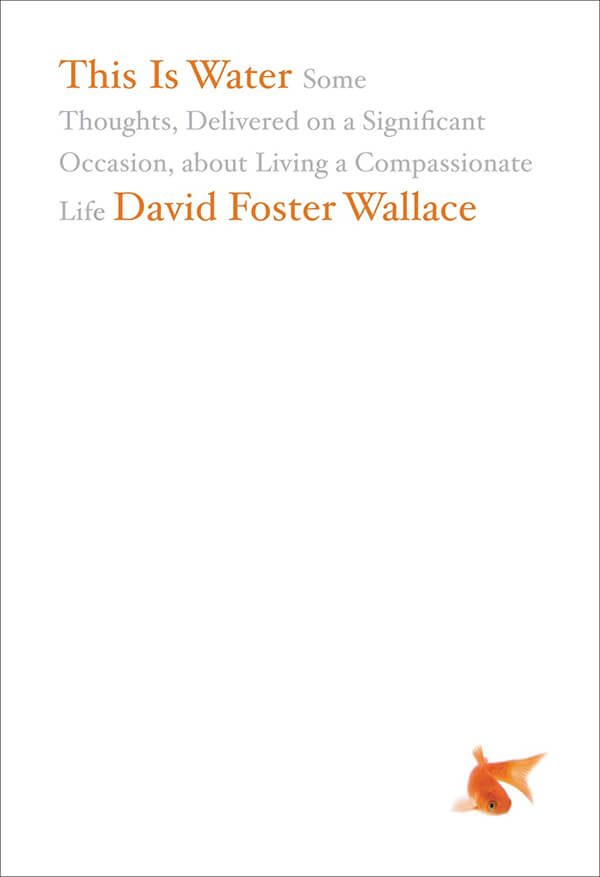The Book in Three Sentences
Learning “how to think” really means learning how to exercise some control over how and what you think. It can be easy to spend our entire lives accepting our natural default ways of thinking rather than choosing to look differently at life. The only thing that is capital-T True is that you get to decide how you’re going to try to see life and how you construct meaning from experience.
This is Water summary
This is my book summary of This is Water by David Foster Wallace. My notes are informal and often contain quotes from the book as well as my own thoughts. This summary includes key lessons and important passages from the book.
- The meaning we construct out of life is a matter of personal, intentional choice. It’s a conscious decision.
- So often, we hold beliefs so tightly we don’t even realize they can be questioned—arrogance, blind certainty, a closed-mindedness that’s like an imprisonment so complete that the prisoner doesn’t even know he’s locked up.
- A huge percentage of the stuff that I tend to be automatically certain of is, it turns out, totally wrong and deluded.
- Our natural setting is to be deeply and literally self-centered. There’s no experience you’ve had that you were not at the absolute center of. We see the whole world through this lens.
- People who can adjust away from this natural, self-centered setting are often described as “well-adjusted.”
- It is extremely difficult to stay alert and attentive instead of getting hypnotized by the constant monologue inside your head.
- Learning “how to think” really means learning how to exercise some control over how and what you think.
- You have to choose what you pay attention to and choose how you construct meaning from experience.
- It is not the least bit coincidental that adults who commit suicide with firearms nearly always shoot themselves in the head.
- The natural default setting is to think I am at the center of the world and my immediate needs and feelings are what should determine the world’s priorities.
- Most days, if you’re aware enough to give yourself a choice, you can choose to look differently at life. If you’ve really learned how to think, how to pay attention, then you will know you have other options.
- The only thing that is capital-T True in life is that you get to decide how you’re going to try to see it. This is the freedom of real education, of learning how to be well-adjusted: You get to consciously decide what has meaning and what doesn’t.
- Everybody worships. We just get to choose what to worship.
- The trick is to keep truth up front in daily consciousness.
- The insidious thing about these forms of worship (money, power, fame, beauty, etc.) is not that they’re evil or sinful; it is that they are unconscious. They are default settings. They’re the kind of worship you just gradually slip into, day after day, getting more and more selective about what you see and how you measure value without ever being fully aware that that’s what you’re doing.
- The really important kind of freedom involves attention, and awareness, and discipline, and effort, and being able truly to care about other people and to sacrifice for them, over and over, in myriad petty little unsexy ways, every day. That is real freedom. That is being taught how to think. The alternative is unconsciousness, the default setting, the “rat race” — the constant, gnawing sense of having had and lost some infinite thing.
- The biggest of questions is not about life after death. The capital-T Truth is about life before death. It is about making it to thirty, or maybe even fifty, without wanting to shoot yourself in the head.
- The real value of education has nothing to do with grades or degrees and everything to do with simple awareness—awareness of what is so real and essential, so hidden in plain sight all around us, that we have to keep reminding ourselves of it over and over.
